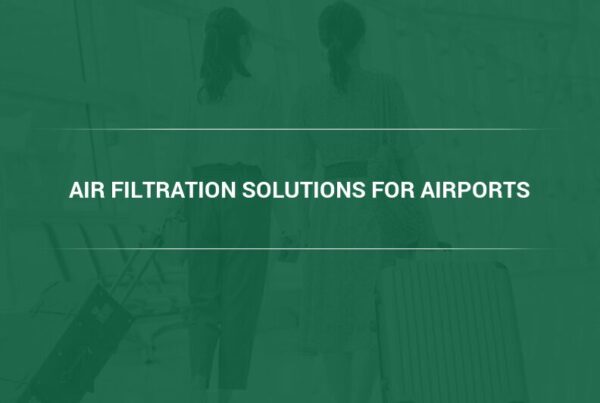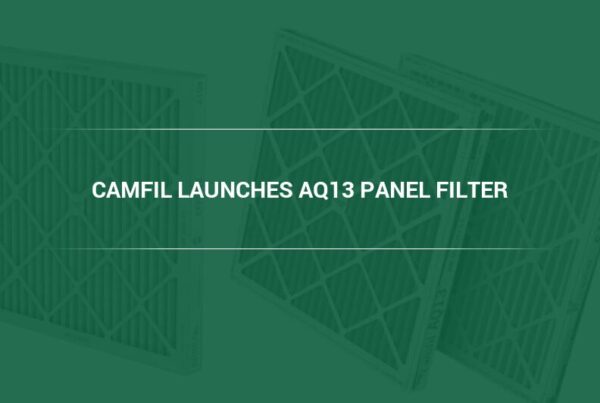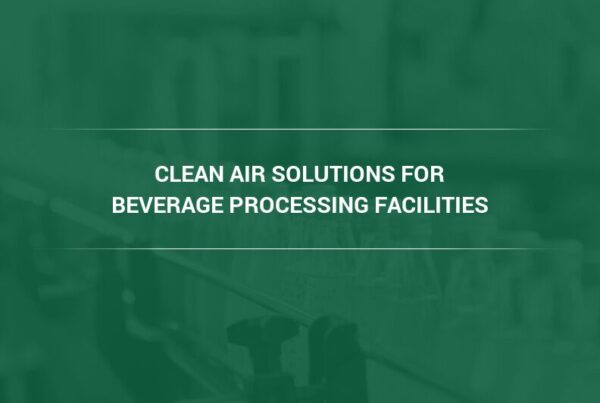Learn why blood type may be a risk factor for heart attack after exposure to low indoor air quality, and why certain people may need air filters more.
Although much of what we know about the dangers of air pollution focuses on exposure to specific airborne pollutants and how to mitigate these risks with air filters, a new study suggests that the risk of air pollution exposure may be higher than usual for a specific group of people.
To be more specific, the kind of blood flowing through your veins may increase or decrease your risk of developing heart ailments caused by exposure to high levels of airborne pollutants. The study’s authors found that a variant ABO gene, commonly found in A, B, and AB blood types, has been connected with increased incidences of cardiac arrest during periods of exposure to airborne pollutants.
On the other hand, people with the O blood type were found to be less susceptible to heart attacks from air pollution exposure.
According to Benjamin Horne, a clinical epidemiologist at the Intermountain Medical Center Heart Institute, this prompted his team to wonder if a specific variation of this ABO gene may be a contributing factor to higher or lower risk of heart attack in times of poor air quality.
Horne’s team examined the medical data of Intermountain Healthcare patients admitted between 1993 and 2007 and found that a specific group of patients experienced an acute coronary syndrome (ACS) during short-term exposure to high levels of PM2.5—fine, inhalable particulate matter with a diameter of 2.5 microns.
When the researchers cross-referenced the data, they found that patients who carried a variant ABO blood type had a marginally higher risk of heart ailments during exposure to PM2.5.
What Makes Particulate Matter So Dangerous to Indoor Air Quality?
Particulate matter, or PM, refers to liquid droplets or solid particles that are small and light enough to be transported by the airstream. The largest PM are visible under beams of sunlight as dust-like particles. While the human body can protect itself from these particles, smaller PM represent a more serious problem to indoor air quality.
“Anything below PM2.5 is where the problems begin to happen,” notes Camfil USA’s David Blackwell, Director of Healthcare Segment. “These particles are more harmful because they are small enough to penetrate the smallest alveoli of the lungs, where they can cross into the bloodstream and reach the body’s vital organs such as the heart, liver, brain, and immune system.”
Particulate matter comes from outdoor sources such as vehicle traffic, factories, and power generation facilities, as well as indoor sources, typically from combustion processes like cooking, heating, and lighting.
And while organizations like the World Health Organization (WHO) and Environmental Protection Agency (EPA) have published guidelines and standards on recommended ambient air quality levels, exposure to even trace levels of particulate matter can be problematic to at-risk members of the population, such as children and infants, as well as the sick and elderly.
Everyone Stands to Benefit from High Efficiency Air Filters
Still, the researchers noted that regardless of blood type, everyone’s risk level increases when concentrations of PM2.5 breach the threshold of 25 micrograms per cubic meter of air, proving that anyone can benefit from the protection provided by higher efficiency air filters. It’s just that people with non-O blood types may be more susceptible to heart issues associated with air pollution.
Indeed, for every incremental increase of 10 micrograms of PM2.5 per cubic meter, the risk for people with A, B, and AB blood types shoots up by 25 percent. On the other hand, the risk for people with O blood goes up only by 10 percent.
But, as mentioned earlier, the 15 percent difference in risk level becomes negligible when you include factors such as age and existing medical conditions. In other words, someone with an O blood type and asthma, for example, is still at a higher risk of developing heart ailments during exposure to polluted air.
The study’s authors, however, urged the public not to panic over the findings of the study, but only to be aware of it. Bottom line? They encourage everyone to stay indoors, exercise indoors when they can, and take their heart medication to reduce their risk of heart disease.
Why High Efficiency Air Filtration Systems Are Needed for Buildings
“There is a problem with that recommendation however. Generally speaking, the quality of indoor air is often worse than outdoor air. The EPA reports that the levels of indoor air pollutants may be two to five times higher than outdoor levels. People on average spend 90% of their time indoors and following the advice of this studies authors could increase that.” said Blackwell.
Where do indoor air pollutants come from? It really depends on the type of building. Burning wood for heating, cooking or within a fireplace in our homes is a significant source as is pet dander or secondhand smoke from cigarettes. A commercial office building has many sources such as copiers, chemicals used for cleaning, and general pollutants stirred up from the constant movement of people. Industrial facilities potentially have the worst indoor air quality simply due to the pollutants generated from the manufacturing process.
A certain percentage of indoor air is recirculated through the building’s HVAC system and mixed with a smaller percentage of outdoor air. Those percentages vary according to the building type and intended activity inside. It’s during this process where an opportunity to filter the air occurs.
How Do High Efficiency Air Filters Work?
High efficiency air filters generally rely on a nonwoven filter media composed from various sized fibers to capture and trap airborne pollutants as air flows through the filter.
The finer the fibers used in the media, the more efficient the filter is at capturing smaller particles.
While there are many different types of air filters on the market, any serious attempt at improving indoor air quality should consider a starting point with a filter carrying a capture efficiency rating of MERV 13/13A based on ASHRAE 52.2 or you could also begin with a filter rated according to ISO 16890 and ePM1-70%.
A Final Word on High Efficiency Air Filters
With the growing body of literature on the dangerous health effects of polluted air, it’s not surprising that the interest in high efficiency air filters is surging. It’s important to remember, however, that an air filter is just one component of a more complex HVAC system which includes fans, ductwork, and monitoring controls. At Camfil USA, we recommend you contact an established company staffed with HVAC professionals who are able to offer guidance on selecting a filter that is compatible with your system and one that addresses your specific indoor air quality needs.
At Camfil USA, our mission is to ensure the air inside of buildings is safe and breathable. We specialize in designing air filters for a wide variety of applications, including schools, hospitals, and manufacturing facilities among others. Get in touch with our team or explore our catalog of air filters to learn more about our product line.



